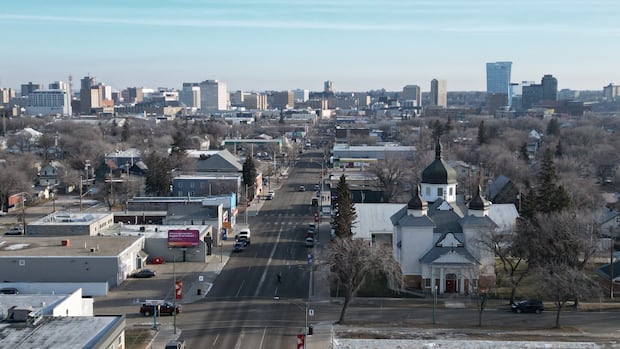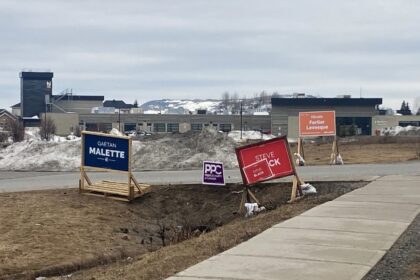SaskatoonHere are 10 fun facts about Saskatoon derived from 2026-27 budget documents on housing, growth, crime, waste disposal and even water usage.Budget documents show declining — but still high — crime rate, growth spurred by international immigrationPhil Tank · CBC News · Posted: Nov 14, 2025 6:00 AM EST | Last Updated: 3 hours agoListen to this articleEstimated 5 minutesThe audio version of this article is generated by text-to-speech, a technology based on artificial intelligence.A drone aerial shot shows the Riversdale neighbourhood with the downtown Saskatoon skyline in the background. (Trevor Bothorel/CBC)With council set to start deliberations on its next two-year budget, Saskatoon city hall has compiled facts related to the spending plan that paint a portrait of Saskatchewan’s largest city. Here are 10 of them.Closing in on EdmontonThe price for an average house in Saskatoon has passed Winnipeg and is nipping at Edmonton’s heels. The projected cost of an average house in Saskatoon has soared to $397,300 this year, according to Canada Mortgage and Housing Corporation numbers.That surpasses Winnipeg ($392,500) and is just behind Edmonton ($412,500).Calgary leads the five largest Prairie cities at $615,000, while Regina offers the lowest average house price at $335,250. Two years ago, the average price of a house in Saskatoon was $358,872.Crime declines, but still highSaskatoon police are seeking a budget increase of more than eight per cent. But the most recent statistics show crime dropped to 8,784 violations per 100,000 people last year from 9,814 in 2023. Yet, even with the lower rate of violations, Saskatoon’s crime rate leads the five largest Prairie cities. And the crime severity index in the Saskatoon region trailed only the Winnipeg region among the five.How’s it growing?The Saskatoon region, which includes rapidly growing cities like Martensville and Warman, added 45,710 people in the last three years — more than the population of Prince Albert. Almost all of that growth comes from international immigration, with a small share also moving to the region from elsewhere in the province. And the region grew even though more than 8,000 folks moved to other provinces from the Saskatoon area over those same three years.Meanwhile, the region’s natural increase (births minus deaths) declined precipitously from 1,931 in 2019-20 to 1,025 in 2023-24.Saskatoon’s population was estimated at 316,342 on June 30.Infill in limboSaskatoon is still struggling to grow within the boundaries of Circle Drive, despite setting an ambitious target. City planning statistics show just 9.5 per cent of new residential units in 2024 were considered infill, with the rest built in the city’s suburbs.That’s the second lowest in more than a decade, with only 2020 lower, at 7.4 per cent. The five-year rolling average for infill is just 11.6 per cent. City hall’s target for infill building this year is set at 25 per cent.But Bridge City is buildingAmid a housing crisis, Saskatoon keeps building new homes. The number of building permits issued last year rose to 3,875, up from 3,099 in 2023 and the highest since 2017.Moreover, the value of construction rose to $1.1 million, well above the 10-year average of $790,738. That increase was driven by a surge in residential development.Construction is booming in Saskatoon, driven by a surge in residential housing. (CBC)Housing starts soarHousing starts in the Saskatoon region are expected to rise this year to far surpass the annual numbers from the previous five years. The Conference Board of Canada forecasts 1,145 single-family home starts and 2,315 apartment or townhouse unit starts this year.That compares to 774 houses and 1,135 apartment and townhouse unit starts in 2020.Affordable housing lagsThe good news is that Saskatoon doubled the number of attainable housing units last year compared to the year before. The bad news is that the 70 units added last year still mark the second fewest in recent years (2023 was the lowest at just 35 new units).In 2017, Saskatoon added 377 new attainable housing units, which missed that year’s target of 500. From 2018 to 2022, Saskatoon failed to meet a reduced target of 200 units. Prior to 2016, Saskatoon used to regularly surpass much more ambitious targets.Oddly, city hall appears to have ramped up its target for last year to 733, according to budget documents, even though it fell short of that goal by 663 units.Business is boomingLast year proved to be a big year for new businesses in Saskatoon. Aspiring entrepreneurs accounted for 767 new home-based businesses — the most since 800 in 2019 — and 654 commercial/industrial businesses, higher than any in the previous seven years.In 2023, just 450 new commercial/industrial business licences were issued. Down the drainSaskatoon residents are using less water. Daily water use per capita has steadily declined from 210 litres in 2021 to 181 litres last year. The city’s budget documents attribute this drop to water rates, which are set to rise by about five per cent in each of the next two years, barring a change at budget talks.As water usage declines, Saskatoon is set to start one of the largest capital projects in city history with upgrades to the water treatment plant costing $191.7 million over the next two years.Waiting on wasteCity hall’s efforts to get people to reduce the amount of waste from the landfill appear to be working. But the diversion rate is still less than halfway toward meeting the city’s target, even after the introduction of organic waste curbside pickup.Waste diversion rose slightly last year to 34 per cent, but that’s still far below the target of 70 per cent. The city’s budget material suggests “significant changes” are needed to meet that goal this year. City council will debate the budget starting on Nov. 25. ABOUT THE AUTHORPhil Tank is a journalist in Saskatoon.
Saskatoon house prices pass Winnipeg’s and other fun facts from the city’s budget documents












